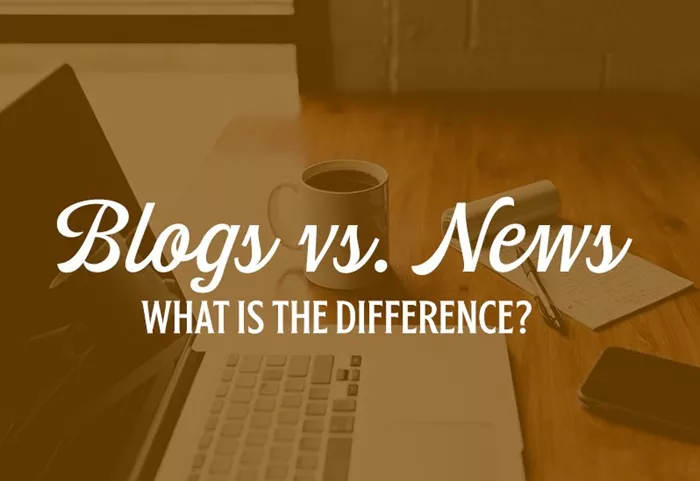In the digital era, where information is constantly shared and consumed, two common forms of content stand out: news articles and blogs. While both serve to inform and engage audiences, they have distinct characteristics, purposes, and styles. Understanding the differences between a news article and a blog is essential for content creators, journalists, and readers alike.
Definition and Purpose
A news article is a piece of writing that presents factual and objective information about current events, developments, or issues. It is typically published by reputable news organizations and follows strict journalistic standards, including accuracy, impartiality, and reliability. The primary purpose of a news article is to inform the public about recent happenings without personal opinions or biases.
A blog, on the other hand, is a more informal and personal form of content. Blogs can cover a wide range of topics, including personal experiences, opinions, expertise, and niche subjects. They are often written by individuals, businesses, or organizations and allow for a more expressive and conversational tone. The primary purpose of a blog is to engage, entertain, or educate readers, often incorporating personal insights and perspectives.
Writing Style and Tone
One of the most notable differences between a news article and a blog is the writing style.
News Articles: These follow a formal, objective, and straightforward style. The tone remains neutral, presenting information without personal opinions. Journalists rely on verified sources, facts, and expert statements to ensure credibility. News articles adhere to the inverted pyramid structure, where the most crucial information appears at the beginning, followed by supporting details, and then less critical background information.
Blogs: These are more flexible in style and tone, often taking a conversational, engaging, or persuasive approach. A blog may include humor, anecdotes, or personal insights, making it more relatable to readers. The structure is more fluid, allowing for storytelling, lists, how-to guides, or other creative formats.
Structure and Formatting
News Articles:
Typically have a headline that summarizes the main news event.
Start with a lead paragraph that answers the essential questions: Who, What, When, Where, Why, and How (5Ws and 1H).
Include quotes from reliable sources to support facts.
Present information in a hierarchical manner, prioritizing the most important details first.
Often maintain a word count limit for clarity and conciseness.
Blogs:
Have catchy or intriguing titles that attract readers.
May start with a hook (a question, statistic, or anecdote) to draw the reader in.
Use subheadings, bullet points, images, and multimedia for better readability.
Encourage personal expression and creativity in structuring content.
Can vary in length, ranging from short-form posts to long-form articles, depending on the topic.
Objectivity vs. Subjectivity
News Articles: Aim for complete objectivity. Journalists strive to present multiple perspectives on an issue, avoiding personal bias or opinions. Credible sources, expert interviews, and data-backed evidence play a crucial role in maintaining neutrality.
Blogs: Often subjective in nature. Bloggers have the freedom to express personal views, share experiences, and provide commentary. While some blogs aim to inform, they are not bound by journalistic ethics and may include biases or personal takes on a topic.
Sources and Credibility
News Articles: Must cite credible sources such as government reports, official statements, experts, and eyewitness accounts. Misinformation is avoided, as journalistic integrity is key. Most news organizations have editorial teams that fact-check content before publication.
Blogs: Can be based on personal opinions and experiences, which may not always require external sources. However, well-researched blogs often cite reliable sources to enhance credibility. Since blogs do not have the same editorial oversight as news articles, misinformation is more likely if the writer is not diligent about fact-checking.
Audience and Engagement
News Articles: Target a broad audience, including the general public, policymakers, professionals, and businesses. The primary goal is to inform readers in an objective manner without engaging in direct interaction.
Blogs: Typically cater to niche audiences based on the topic. Bloggers encourage reader interaction through comments, discussions, and social media engagement. The conversational nature of blogs fosters a community-like experience where readers can share their thoughts and opinions.
Distribution and Publication Platforms
News Articles: Published on news websites, newspapers, magazines, and online news portals. Major media organizations, such as BBC, CNN, and The New York Times, distribute news content through television, radio, print, and digital platforms.
Blogs: Can be published on personal or company websites, blogging platforms (e.g., WordPress, Medium, Blogger), or social media. Unlike news articles, blogs do not require affiliation with a major media organization and can be self-published by anyone.
Monetization and Business Models
News Articles: Traditionally funded through advertising, subscriptions, and sponsorships. Many reputable news organizations implement paywalls, requiring readers to subscribe for full access to articles.
Blogs: Monetization options include affiliate marketing, sponsored content, ad revenue, online courses, and e-books. Successful bloggers may generate income through brand partnerships and influencer marketing.
Ethical Standards and Regulations
News Articles: Adhere to strict journalistic ethics, including accuracy, fairness, transparency, and accountability. Violations can lead to legal consequences, retractions, or loss of credibility.
Blogs: Less regulated and not bound by formal journalistic standards. While ethical blogging is encouraged, there are no strict industry-wide rules governing blog content. Readers must evaluate the credibility of the source before trusting information.
Conclusion
While both news articles and blogs contribute to the digital information landscape, their fundamental differences set them apart. News articles focus on objective, fact-based reporting, following professional journalism standards. In contrast, blogs provide a more personal and engaging approach, allowing for opinion-based content and creative expression.
Understanding these differences helps content creators choose the right format for their message and enables readers to distinguish between factual reporting and opinion-based content. Whether consuming or producing content, recognizing the purpose, structure, and credibility of each format ensures informed and responsible engagement with the vast world of digital media.
Related Topics
- How Do You Know If Your Blog Niche Is Profitable?
- What Does Niche Mean in Content?
- Can You Blog Without a Niche?

